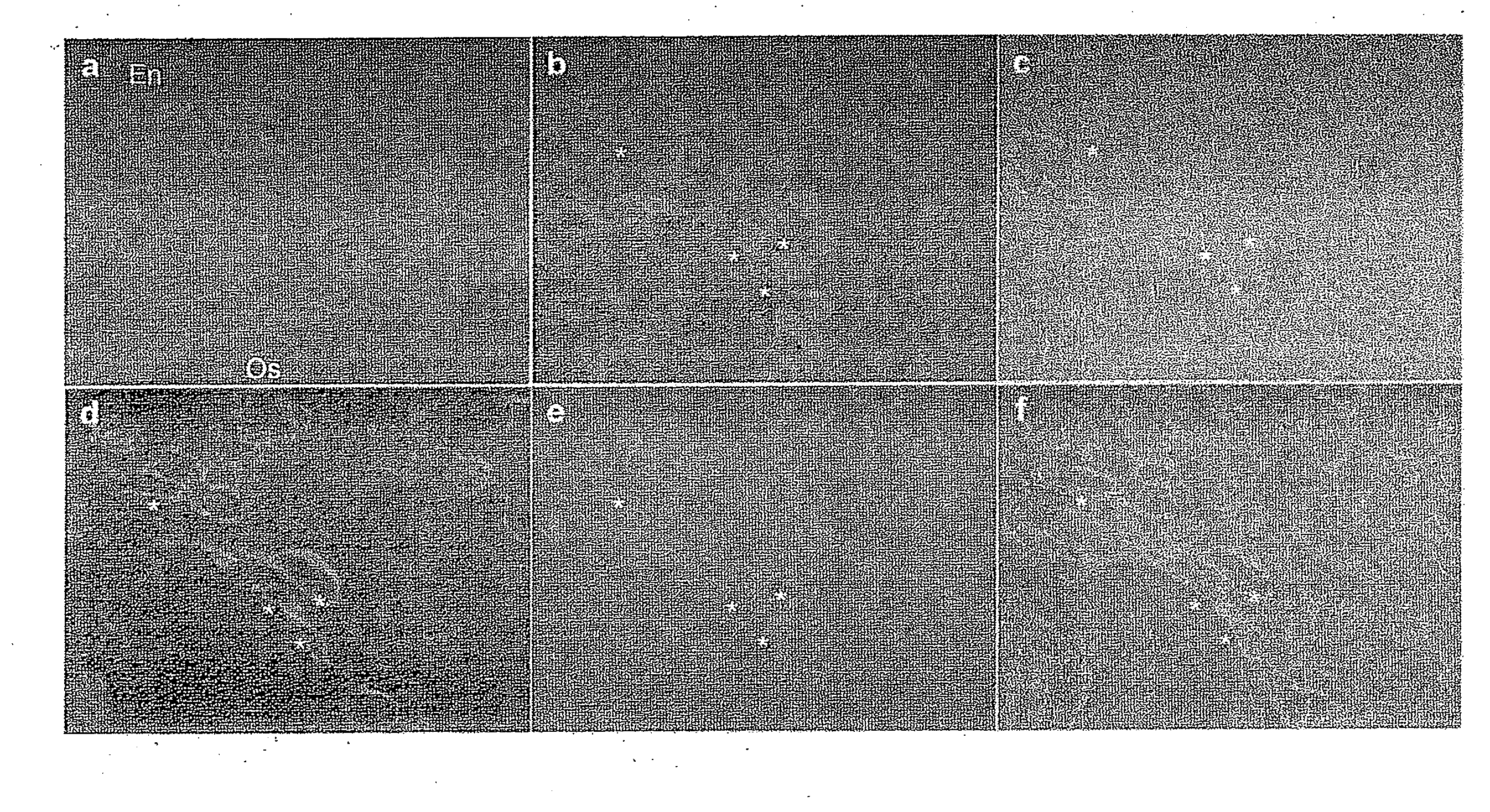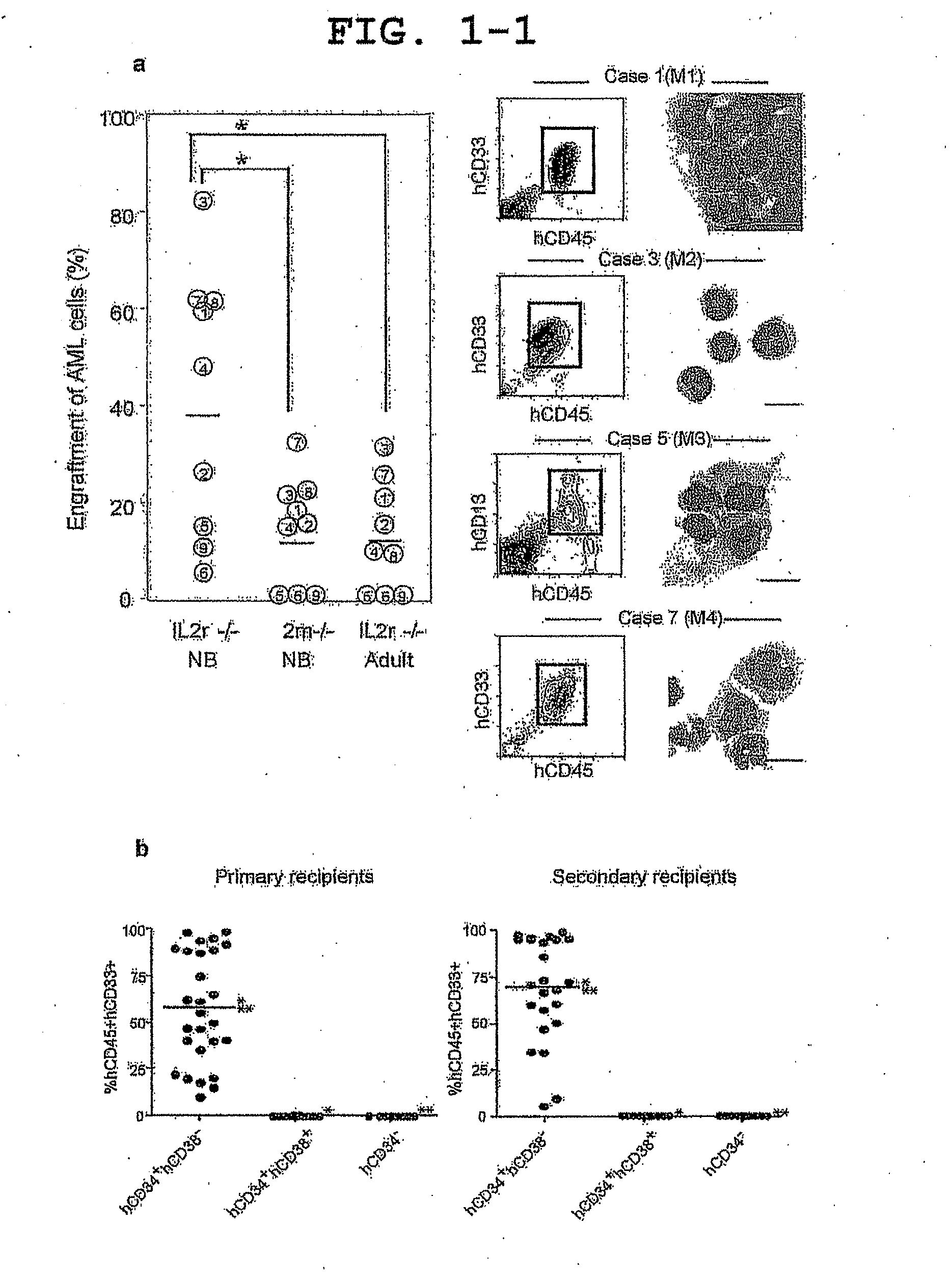Mouse having human leukemic stem cell and leukemic non-stem cell amplified therein, and method for production thereof
a technology of stem cells and mice, which is applied in the field of mice with human leukemic stem cells and leukemic non-stem cells amplified therein, can solve the problems of preventing us from helping patients, recurrence later is the difficult problem, and it is difficult to achieve a high engraftment rate of primary human aml, so as to achieve superior aml as a human model, monitor the effectiveness of therapeutic drugs or treatment methods, and prevent patients from
- Summary
- Abstract
- Description
- Claims
- Application Information
AI Technical Summary
Benefits of technology
Problems solved by technology
Method used
Image
Examples
example 1
[0073]Primary human AML cells engraft with high efficiency in the newborn NOD / SCID / IL2rγnull model. From BM of nine patient containing 80-90% AML blasts, 4×106 T cell-depleted BM mononuclear cells (BMMNCs) were intravenously injected into sublethally irradiated recipients. Human AML engraftment was significantly more efficient in newborn NOD / SCID / IL2rγnull recipients (37.8%) when compared with adult NOD / SCID / IL2rγnull (11.9%) and newborn NOD / SCID / β2mnull (12.9%) recipients (FIG. 1a). Furthermore, all AML patient BMMNCs engrafted in newborn NOD / SCID / IL2rγnull recipients, while 3 / 9 (two M3 and an M7) BMMNCs failed to engraft in adult NOD / SCID / IL2rγnull and newborn NOD / SCID / β2mnull recipients.
example 2
[0074]In CB17 / SCID and NOD / SCID mice, human AML hCD34+hCD38− engraftment in BM has been previously demonstrated while limited peripheral blood (PB) engraftment has been detected (Lapidot, T. et al. A cell initiating human acute myeloid leukaemia after transplantation into SCID mice. Nature 367, 645-648 (1994) and Lumkul, R. et al. Human AML cells in NOD / SCID mice: engraftment potential and gene expression. Leukemial6, 1818-1826 (2002)). In the newborn NOD / SCID / IL2rγnull recipients, dose-dependent PB AML engraftment was detected following intravenous injection of as few as 103 sorted primary AML hCD34+hCD38− cells with no exogenous cytokines or other manipulations, while injection of 5×104-106 hCD34+hCD38+or 106 hCD34− cells did not result in detectable engraftment (FIG. 1b-f, Table 1). Transplanted hCD34+hCD38− LSCs gave rise to hCD45+hCD34+hCD38− cells as well as to hCD45+hCD34+CD38+ and hCD45+hCD34− non-stem AML cells, demonstrating both self-renewal and differentiation capacities...
example 3
[0075]Serial transplantation demonstrated the functional self-renewal and differentiation capacities of AML BM hCD3e+hCD38− cells, a defining property of LSCs. In secondary and tertiary recipients, injection of as few as 104 and 103 purified AML BM hCD34+hCD38− cells, respectively, resulted in sufficiently efficient long-term engraftment, giving rise to hCD34+hCD38− LSCs and hCD34+hCD38+ / hCD34− blasts (FIG. 1b, g-j, Table 1). As in the primary recipients, all secondary and tertiary recipients of sorted hCD34+hCD38− cells showed AML engraftment (FIG. 1b, Table 1). In contrast, neither 5×104-106 hCD34+hCD38+nor 105-2×106 hCD34− purified BM cells initiated leukemia detectable in secondary and tertiary recipient PB and BM (FIG. 1b, i, j). These findings demonstrate that LSCs remain hCD34+hCD38− while xenogeneic BM microenvironment supports self-renewal and differentiation of human LSCs during the course of serial transplantation. Human AML was maintained cumulatively in vivo from the pa...
PUM
| Property | Measurement | Unit |
|---|---|---|
| Time | aaaaa | aaaaa |
Abstract
Description
Claims
Application Information
 Login to View More
Login to View More - R&D
- Intellectual Property
- Life Sciences
- Materials
- Tech Scout
- Unparalleled Data Quality
- Higher Quality Content
- 60% Fewer Hallucinations
Browse by: Latest US Patents, China's latest patents, Technical Efficacy Thesaurus, Application Domain, Technology Topic, Popular Technical Reports.
© 2025 PatSnap. All rights reserved.Legal|Privacy policy|Modern Slavery Act Transparency Statement|Sitemap|About US| Contact US: help@patsnap.com



